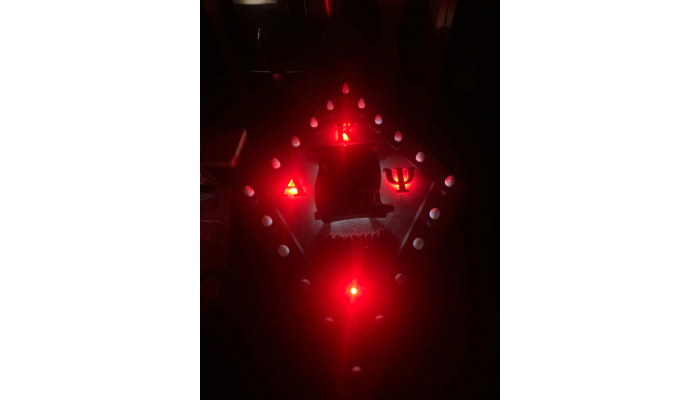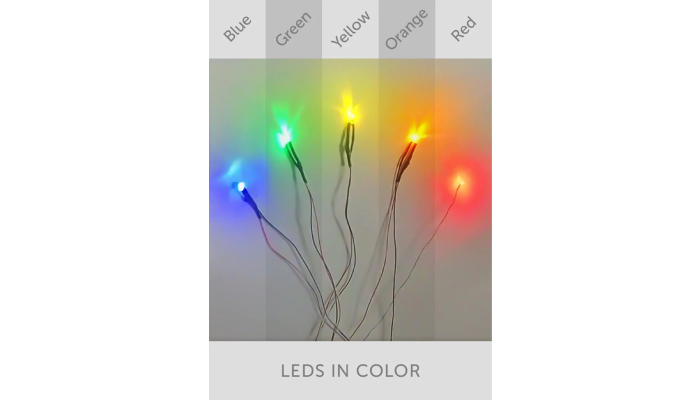
Mini LED Lights vs Regular Lights: What’s the Difference?
Mini LED lights differ from regular LEDs mainly in size and performance. Regular LEDs are larger, several millimeters each, used broadly in household and industrial lighting with good energy efficiency and durability. Mini LEDs are much smaller, less than 0.2 millimeters, allowing thousands to be packed tightly for more precise control over brightness and contrast. This makes Mini LEDs ideal for high-end displays where deep blacks and reduced light bleed matter. Although Mini LEDs offer better brightness and color accuracy, they tend to cost more and need careful heat management due to higher density. Regular LEDs remain a reliable, affordable choice for everyday lighting needs.
Brightness and Light Control Differences
Mini LED lights deliver higher overall brightness thanks to their dense packing of thousands of tiny LEDs, allowing for many local dimming zones. This means they can precisely control brightness by adjusting or completely turning off specific zones, which reduces light leakage and enhances black levels. For example, in a Mini LED display, dark scenes appear deeper and more detailed because small areas can be dimmed independently without affecting the entire screen. Regular LED lights, while still bright, have fewer dimming zones, offering less precise light control. They tend to emit a more uniform light over broader areas, which limits their ability to manage contrast or reduce light bleed effectively. In practical terms, Mini LED technology enables higher peak brightness needed for HDR content and better viewing in bright environments, while regular LEDs maintain consistent brightness but lack the fine granularity of Mini LEDs. Additionally, Mini LEDs can save energy by dimming unused zones rather than powering the whole panel at once. Regular LEDs work well for general lighting where such detailed zone control isn’t necessary, like in household bulbs or street lamps, but they can’t match the enhanced contrast or dynamic range that Mini LEDs provide in more specialized applications.

Contrast and Color Accuracy Comparison
Mini LED displays provide a significant advantage in contrast and color accuracy compared to regular LED lights. Because Mini LEDs are much smaller and packed densely, they allow for many localized dimming zones. This means the display can turn off or dim individual sections of LEDs in dark areas, resulting in much deeper blacks and reducing the halo effect, where light bleeds around bright objects on dark backgrounds. Regular LED displays, in contrast, usually have fewer dimming zones and larger LEDs, which leads to less precise light control and more light bleed. This causes blacks to appear more grayish and images to look washed out by comparison.
In terms of color accuracy, Mini LEDs excel by finely controlling brightness across the screen. This precise control helps maintain consistent and vibrant colors, supporting wider color gamuts and higher dynamic range. The reduction of halo effects also means clearer images with better detail, making Mini LED displays particularly suitable for tasks like gaming, video editing, or watching high-quality content. Regular LEDs can still deliver respectable colors and contrast but fall short when compared to the richer, more accurate visuals Mini LEDs offer.
While Mini LED technology approaches the color depth and contrast levels of OLED screens, it avoids issues like burn-in that OLEDs sometimes face. Regular LEDs remain adequate for many everyday uses, but their contrast and color precision are limited by their simpler backlighting design. Overall, if visual clarity, deeper blacks, and true-to-life colors matter, Mini LED displays offer a clear step up over regular LED counterparts.
Energy Efficiency and Heat Emission
Both Mini LED and regular LED lights are far more energy-efficient than traditional incandescent or fluorescent bulbs, which waste much of their energy as heat. Regular LEDs have a long-standing reputation for low power consumption and run cool enough to simplify installation and long-term operation. Mini LEDs, while still generating much less heat than incandescent bulbs, have a higher density of tiny LEDs packed into a small area. This density means they can produce more light in a compact space but also require effective thermal management to prevent heat buildup. Unlike regular LEDs that emit very little heat and maintain steady performance, Mini LED systems rely on advanced electronics to selectively dim or turn off unused zones, saving energy by reducing power where it’s not needed rather than improving raw efficiency. This precise control can lead to energy savings, especially in displays or lighting setups that benefit from dynamic local dimming. However, the increased heat generation in Mini LEDs, due to their packed design, means manufacturers must integrate cooling solutions or heat sinks to maintain optimal performance and lifespan. In contrast, regular LEDs’ lower heat output makes them simpler and often more reliable in general lighting applications. Overall, both technologies contribute significantly to reducing energy use and environmental impact compared to older lighting options, but Mini LEDs trade off some thermal simplicity for finer control and higher brightness.
Advantages of Mini LED Lights
Mini LED lights provide several key benefits over regular LEDs, especially when it comes to display technology. Their smaller size allows thousands of LEDs to be packed into a panel, which offers much finer control over lighting zones. This results in superior brightness and higher contrast ratios, producing deeper blacks and reducing the halo effect often seen in traditional LED displays. With more precise local dimming, Mini LEDs deliver clearer, sharper images and support a wider color range and higher dynamic range, making them ideal for gaming, movies, and professional content. Unlike OLEDs, Mini LEDs avoid issues like burn-in while still approaching similar display quality. Additionally, Mini LEDs enable thinner, lighter panels due to their compact size, which benefits portable devices and sleek designs. Beyond displays, their fine light control opens new possibilities in automotive and architectural lighting where dynamic and customizable illumination is valuable. Mini LEDs also offer improved durability and longer lifespan under typical use. Energy savings are another advantage, as selective activation of LEDs and localized dimming reduce power consumption compared to regular LEDs. Overall, Mini LED technology builds on traditional LED strengths by enhancing brightness, contrast, and control, delivering a more immersive and energy-efficient lighting experience.
Advantages of Regular LED Lights
Regular LED lights offer several practical benefits that make them a popular choice for everyday use. One of their biggest advantages is affordability; they are generally much cheaper than Mini LEDs and widely available, making them an easy option for most consumers. Their long operational life is well established, often lasting up to 30 times longer than traditional incandescent bulbs, which reduces the need for frequent replacements. Energy efficiency is another significant plus, as regular LEDs use about 75% less energy compared to incandescent lighting, helping save on electricity bills. The technology behind regular LEDs is simple and mature, supported by a robust manufacturing and installation infrastructure, which contributes to their reliability and ease of maintenance. These lights emit directional light, which means they focus illumination where it’s needed, reducing wasted light and improving efficiency in many setups such as household lamps and street lighting. Regular LEDs also generate very little heat, increasing safety and making them easier to handle during installation or replacement. Their color output is stable and suitable for general lighting needs, providing consistent and pleasant illumination for homes, offices, and industrial spaces. Because they fit well in a variety of environments, from residential rooms to commercial buildings, and are easy to find, replacing or upgrading regular LEDs is straightforward, making them a practical and dependable lighting solution for many applications.
Disadvantages of Mini LED Lights
Mini LED lights come with several downsides despite their advanced technology. Their manufacturing process is more complex and resource-intensive, which drives up both production time and retail costs. The high density of tiny LEDs packed into a small area creates challenges for thermal management, requiring more sophisticated cooling solutions to prevent overheating. Currently, Mini LEDs are mainly found in display backlighting, limiting their availability for general home or industrial lighting needs. Additionally, because Mini LED panels rely on backlighting layers, they can be thicker compared to OLED alternatives, which might affect design slimness in some devices. The advanced electronics needed to control thousands of tiny LEDs increase overall device complexity, raising the risk of potential failure points and necessitating specialized drivers and control systems. This complexity, combined with limited use cases, means there are fewer product options for consumers outside of displays. As the technology is still evolving, long-term durability and reliability data are not as well established as with regular LEDs. Lastly, in scenarios where Mini LEDs operate at full brightness without dimming, they can consume more power, which may reduce overall energy efficiency compared to standard LEDs in some applications.
Disadvantages of Regular LED Lights
Regular LED lights have several limitations, especially when used in display technology. They provide lower contrast and less precise control over individual light zones, which means they can’t produce the deep blacks and sharp images that Mini LEDs achieve. This often leads to halo or light bleed effects around bright objects on dark backgrounds, reducing image clarity. Because there are fewer LEDs per area, their local dimming capabilities are coarse, causing uneven brightness and less accurate color reproduction. In some cases, this can even result in glare due to less controlled light output. While regular LEDs perform well for general lighting, their color depth and black level performance fall short compared to Mini LEDs and OLEDs, making them less suitable for premium displays or lighting that demands high dynamic range and fine detail. Additionally, innovation in regular LED technology has plateaued, offering limited improvements compared to the advances seen with Mini LED solutions.
Common Uses for Mini LED and Regular LED Lights
Mini LED lights are mainly found in premium display backlighting for TVs, monitors, and laptops, where their small size allows for fine zone control and higher brightness. This precise control makes them ideal for applications requiring high contrast, such as gaming monitors and professional content creation screens. Beyond displays, mini LEDs are gradually making their way into specialized lighting fields like automotive headlights and architectural lighting, where dynamic and localized light control enhances both function and design. However, their use outside of display technology remains relatively niche due to cost and manufacturing complexity. On the other hand, regular LEDs dominate the broader lighting market. They are widely used in residential and commercial settings as bulbs, downlights, and strip lights. Outdoors, you’ll find regular LEDs in street lamps and parking lot lighting, favored for their durability and efficiency. They also power decorative and holiday lighting, industrial fixtures, and portable task lighting devices. Most replacements for incandescent or fluorescent bulbs use regular LEDs because of their affordability and proven performance. While mini LEDs offer advantages in brightness and control, regular LEDs provide versatile, cost-effective solutions for everyday lighting needs across numerous environments.
Cost Differences Between Mini LED and Regular LED
Mini LED products generally come with a higher price tag compared to regular LEDs. This is mainly because Mini LEDs require advanced manufacturing techniques and a much higher density of tiny LEDs packed into a small space. The precise placement and sophisticated control electronics needed for Mini LED technology add to production costs, making these products more expensive upfront. In contrast, regular LEDs benefit from well-established manufacturing processes and large-scale production, which drive prices down. These cost efficiencies make regular LEDs more accessible and budget-friendly for most consumers. For example, a Mini LED backlit TV or monitor typically costs noticeably more than a comparable regular LED model. However, the premium cost of Mini LEDs often appeals to buyers who want top-tier display performance or specialized lighting with finer control. On the other hand, regular LEDs remain the go-to choice for everyday lighting needs due to their affordability, ease of installation, and lower replacement costs. While Mini LED devices might save energy over time thanks to their ability to selectively dim zones, the initial investment is still significant. Industry experts expect Mini LED prices to decrease as production scales and technology matures, potentially narrowing the cost gap with regular LEDs in the future. For now, the difference in price often determines whether a consumer prioritizes cutting-edge quality or cost-effective lighting solutions.
Environmental Impact of Both Technologies
Both Mini LED and regular LED lights offer significant environmental benefits compared to traditional incandescent and fluorescent bulbs, primarily due to their much lower energy consumption. Regular LEDs typically use up to 75% less energy than incandescent bulbs, and Mini LEDs can push this efficiency further by enabling precise localized dimming that turns off unused zones, reducing wasted power. The long lifespans of both technologies also mean fewer replacements over time, which helps cut down on waste. Neither type contains mercury or other hazardous substances, making disposal safer and less harmful to the environment. However, Mini LEDs require a higher density of tiny LEDs, which leads to more complex manufacturing processes and greater resource use, including advanced thermal management to handle heat in compact designs. This can slightly increase their environmental footprint during production and operation compared to regular LEDs. Still, both technologies support recycling better than older lighting types, thanks to fewer toxic components. Additionally, Mini LED’s ability to integrate into smarter lighting systems that adapt to ambient conditions offers potential for further energy savings. Overall, while Mini LEDs may have a modestly higher environmental cost in manufacturing, their energy-saving capabilities during use and safer disposal contribute positively to reducing greenhouse gas emissions and waste.
Summary of Key Differences
Mini LED lights are much smaller than regular LEDs, measuring less than 0.2 millimeters compared to several millimeters for regular LEDs. This size difference allows Mini LED panels to pack thousands of tiny LEDs into a display or lighting unit, offering much finer control over brightness and dimming zones. Regular LEDs have fewer, larger diodes, which limits how precisely light can be controlled. Because of their dense arrangement, Mini LEDs achieve higher brightness levels and better local dimming, resulting in deeper blacks and less halo effect, especially noticeable in displays. Both technologies are energy efficient, but Mini LEDs can save more power when selectively turning off lighting zones. Heat emission remains low for both, though Mini LEDs require better thermal management due to their compact and dense LED arrays. Cost is a significant factor: Mini LEDs come with a higher price tag because of their advanced manufacturing and complexity, while regular LEDs are affordable and widely used in everyday lighting. Lifespan for both is long, but regular LEDs have a more established record over time. Mini LEDs mainly appear in premium displays and specialized lighting, whereas regular LEDs dominate residential, commercial, and industrial lighting markets.
Tips for Choosing Between Mini LED and Regular LED Lights
If you want the best picture quality with high brightness and sharp contrast, especially for TVs, monitors, or professional displays, Mini LED is the way to go. It offers fine control over lighting zones, which helps reduce light bleed and allows for precise brightness adjustments. This makes it a great choice for gamers, movie fans, or content creators who need accurate colors and high dynamic range. Just keep in mind that Mini LED technology comes at a premium price. On the other hand, if you’re looking for a budget-friendly, reliable lighting option for everyday use, regular LED lights are a solid choice. They are energy-efficient, widely available, and easy to install. Regular LEDs are especially practical for large projects like street lighting or industrial setups because they’re durable and cost-effective. Both lighting types are eco-friendly, but Mini LEDs can save more energy in specialized settings thanks to their ability to dim specific zones. Ultimately, balance your budget with your performance needs: choose Mini LED for premium, high-quality applications, and regular LED for dependable, efficient lighting in most other situations.
- Choose Mini LED if you need superior image quality with higher brightness and contrast, especially for TVs, monitors, or professional displays.
- Pick Mini LED if you want advanced control of lighting zones to reduce light bleed and achieve precise brightness adjustments.
- Consider Mini LED if you are a gamer, movie lover, or content creator who values high dynamic range and color accuracy.
- Opt for Mini LED if you are willing to pay a premium price for cutting-edge lighting technology.
- Select regular LED lighting for cost-effective, reliable solutions suitable for everyday residential or commercial use.
- Go for regular LED if you want proven, energy-efficient lighting that is widely available and easy to install.
- Regular LEDs are preferable for large-scale lighting projects like street lights or industrial lighting due to their affordability and durability.
- If you need long-lasting bulbs with minimal maintenance, regular LEDs offer a solid track record of lifespan and reliability.
- Consider the environment: both options reduce energy use, but Mini LED’s localized dimming can offer extra savings in specialized settings.
- Balance your budget and performance needs: Mini LEDs suit premium applications, while regular LEDs provide excellent value for general lighting.


